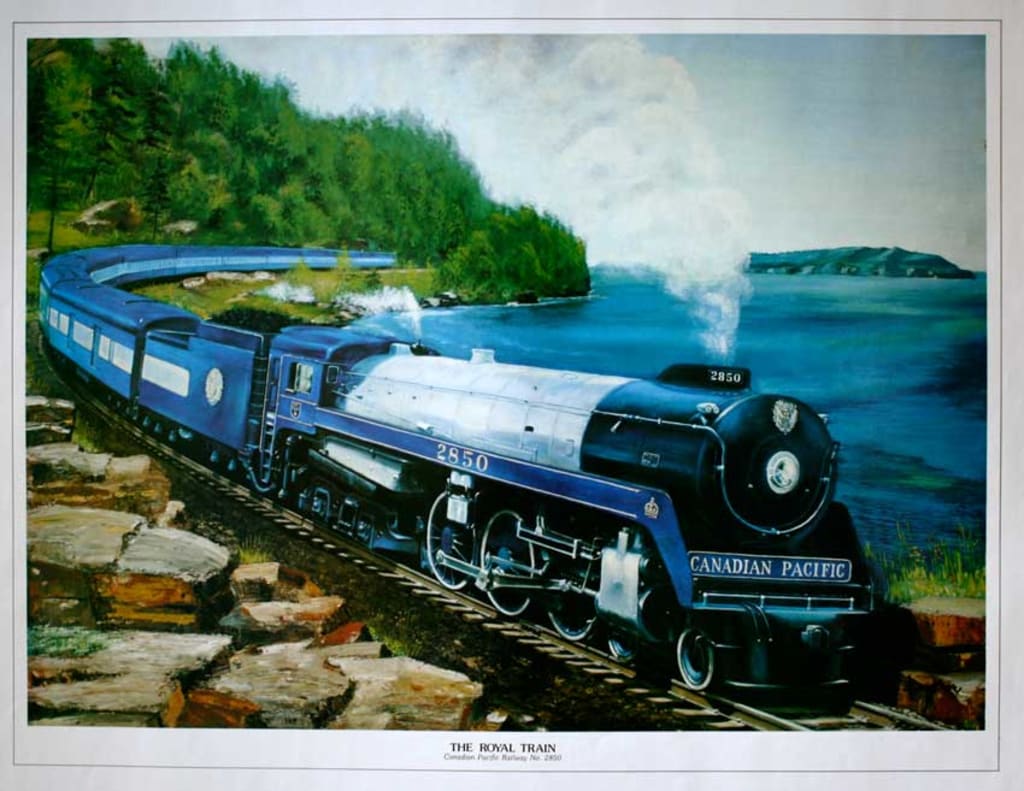How the CPR Hudson locomotives became known as Royal Hudsons
A piece of Canadian history

This is the story about how the Canadian Pacific Railway came to be the only non-British railway to be allowed to use the term Royal for a locomotive.
The Canadian Pacific Railway (CPR) is one of two national rail companies (the other being Canadian National Railway, CNR) operating in Canada. It was founded on Feb, 16, 1881, making it the oldest railway in Canada. They have a long history with our country and have played a large part in the creation of this great nation.
The 4-6-4 Hudson semi-streamlined locomotive was a workhorse for the CPR railway from 1937 through to the end of the steam era in the early 1960’s CPR when they converted their fleet to diesel electric locomotives. With trains getting heavier and longer the CPR needed to replace the 4-6-2 Pacific locomotives that were proving to be underpowered and too slow on long runs. In 1937, CPR ordered 30 new semi-streamlined Hudson locomotives. These were the first of the locomotives that would eventually become known as Royal Hudsons.
In 1939, King George VI and his wife Queen Elizabeth visited Canada, for a thirty-one day tour of the country. This was the first time a reigning monarch had visited Canada. A special twelve car Royal train was put together for them to use on their cross country trip. Both national railways shared the honour of transporting the Monarchs. The CPR was tasked with transporting them on their 5,189km (3,244mi) trip from Quebec City QC to Vancouver BC.

The 2850 Hudson was only five months old at the time when it was chosen to pull the Royal train. It was repainted specially for this trip. The smoke box was painted black. The running boards, cab panels, and side panels on the tender were painted Royal Blue instead of the standard Tuscan Red. The drive cylinders and the boiler were covered in polished stainless steel - instead of the grey they were usually painted. The running gear and frame were also painted Royal Blue. There were polished aluminum panels added to the tender to match the side panels on the cars.
Royal arms were cast in relief to be placed on the train. One was placed above the head light, and the other two which where 4’ high were placed on either side of the tender. A set of polished, cast brass numerals denoting 2850 were set on both running boards. The CPR shield remained on either side of the cab.
The Hudson 2850 led the train for the entirety of the western leg of the trip. As an avid rail fan the King rode in the cab of the locomotive whenever possible. He was impressed by the power and how mechanically sound the Hudson was. He was also impressed with the fact that one locomotive could handle their train without changing engines. The Royal train went through twenty five crew changes on its cross Canada journey. The Hudson performed flawlessly with no mechanical breakdowns or any mishaps during the journey.
The trip went so well, that soon after when the CPR petitioned the Royal Family for permission to include Royal in its name. The Royal family agreed. From then on, all semi-streamlined Hudsons that the CPR ran were to be known as Royal Hudsons. All Royal Hudsons were permitted to have the Imperial crown on their running boards.
The 2850 Royal Hudson used for the monarch’s trip continued in service until 1960. It was retired and is currently preserved and on display at the Canadian Railway museum, located in Delson/Saint-Constant QE.

4-6-4 Royal Hudson 2850 Specifications
Drivers 75”
Pilot wheels 33”
Weight 366,000lbs (166tons)
Boiler 275psi
Traction 45,250ftlbs
Cylinder 22” x 33”
Water 12,000Imp.gal
Coal 21 tons
About the Creator
Craig Robertson
I am a husband and father. I'm excited to use this platform to help hone my writing.






Comments
There are no comments for this story
Be the first to respond and start the conversation.